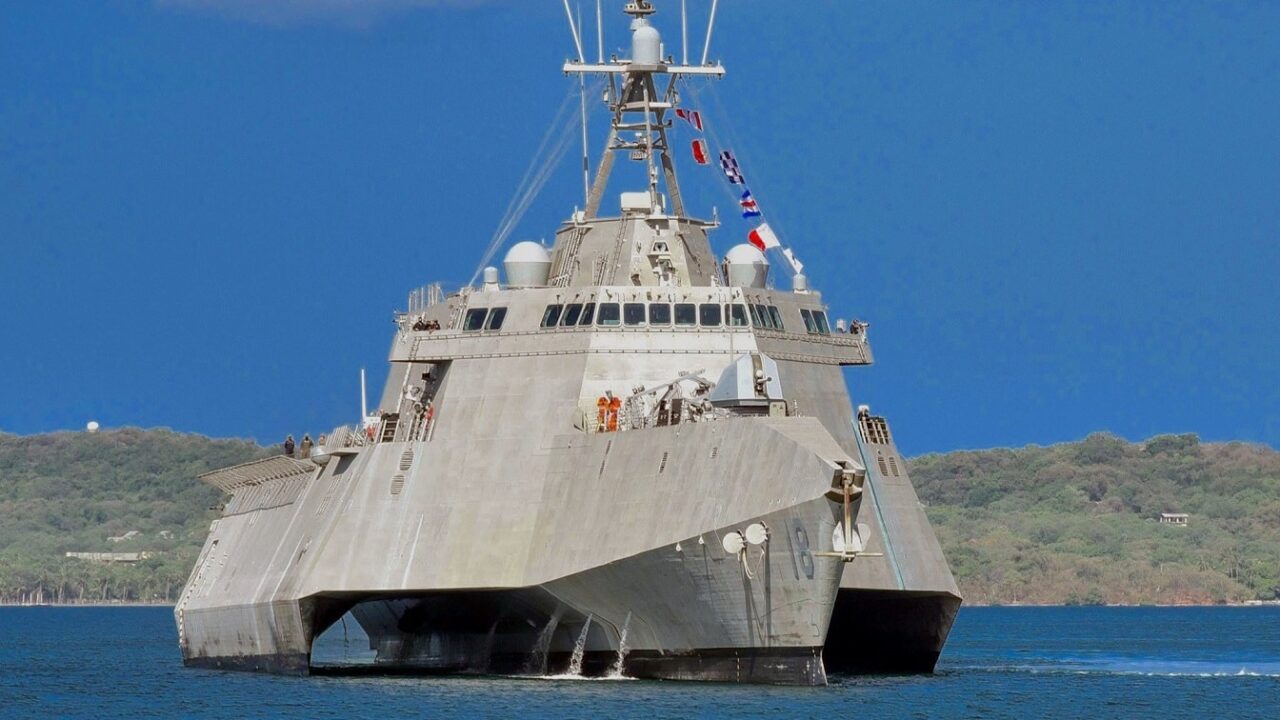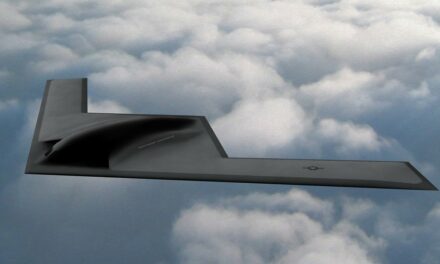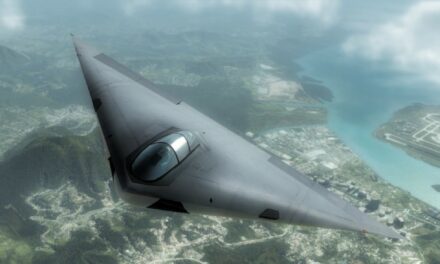We support our Publishers and Content Creators. You can view this story on their website by CLICKING HERE.
Key Points: The Littoral Combat Ship (LCS) program, initially envisioned as a game-changer for modern naval warfare, has become a cautionary tale of mismanagement and inefficiency.
-Designed for missions like counter-terrorism, counter-narcotics, and mine clearing, the program faced design disputes, cost overruns, faulty weapon systems, and frequent maintenance issues.
-Dubbed a “Little Crappy Ship,” its poor reliability and lack of combat readiness hindered its relevance, especially in the face of great power competition with China and Russia. Though later equipped with Naval Strike Missiles and drones, the LCS remains a symbol of waste, with $100 billion spent on a largely failed fleet.
Fixing the Unmitigated Failure of the Littoral Combat Ship
It was supposed to revolutionize naval warfare. The Littoral Combat Ship (LCS) could patrol close to shores as a “Brown Water” fast and agile maritime asset during the war on terror and against transnational crime.
Things did not turn out as planned. The LCS has been a massive failure that has government watchdogs up in arms as think tankers point it out as a poster child for waste and abuse. What happened to the LCS?
Let’s Take a Poll
This ship has been unpopular for years and civilian defense workers agree it has been a disaster. At a recent gathering at the Surface Navy Association, a speaker got right to the point with a non-scientific survey.
“Raise your hand if you’ve ever said something bad about the Littoral Combat Ship,” the panel host said. “Raise your hand if you’re still saying bad things about the Littoral Combat Ship.”
Numerous hands went up amid a chorus of laughter. This encapsulated the LCS program that has struggled mightily over the years.
What Was the LCS Supposed to Do?
The main idea behind the LCS 22 years ago during the Global War on Terror was that the Navy needed a ship that could do what large surface combatants could not do. For example, the LCS could better support counter-terror missions.
Littoral Combat Ship. Image Credit: U.S. Navy.
It could also allow for counter-narcotics missions. And it would be able to better conduct counter-insurgency campaigns. Plus, it could clear mines and search for submarines. The operations in Iraq and Afghanistan were counter-terror and counter-insurgency wars not great power conflicts, so the LCS would be right at home in the modern age.
Littoral Combat Ship Was Cursed
The problems quickly started. The Navy couldn’t agree on a design; costs went sky high, delays, weapons systems didn’t work, shipbuilders were confused, naval personnel had to be re-trained on the mission sets, and maintenance was expensive.
Since 2021, the Navy decommissioned seven Littoral Combat Ships. In the next three years, the maritime branch plans to retire three more.
No Way to Defend Itself
One big reason was that the weapons on the vessel were faulty. This meant it was a “box floating in the ocean.” Some called it a “Little Crappy Ship.” The rise of China and Russia with large conventional and powerful navies showed that the LCS didn’t have the firepower to make a difference in a great power war.
Plus, the LCS was often at dry dock for repairs and maintenance instead of on patrol doing its job. This “job” was, of course, unclear to commanders and sailors as they waited for their vessels to be seaworthy. Personnel had to watch in frustration as contractors instead of active duty sailors maintained and repaired the ships. Crews had nothing to do while the LCS underwent down periods.
Then, the ships started breaking down at sea. This happened close to the port, to add insult to injury. The USS Freedom had a leak that killed the engine. USS Milwaukee couldn’t make it out of its home port before shutting down. USS Coronado had bad water jets. USS Montgomery hit a tugboat. The list of mishaps goes on and on.
The Naval brass ignored these maladies and ordered ships out to sea anyway. The crews were not trained or prepared to deal with the hardships and morale was affected.
One Hundred Billion Dollars Wasted
Some Members of Congress, since the LCS was manufactured in their home districts, called for even more Littoral Combat Ships to be built. The estimated lifetime cost of the LCS program was $100 billion. The Navy had planned to build 55 LCS and only 33 were ever constructed.

Littoral Combat Ship. Image Credit: US Navy.
There is one saving grace to the LCS. The Navy finally got a working weapons system on board. A handful of the vessels are armed with the Naval Strike Missile, so these are somewhat relevant in a conventional fight against China or Russia. These ships also use drones for intelligence, surveillance, and reconnaissance duties.
Captain Marc Crawford, commodore of Littoral Combat Ship Squadron One, said the LCS is the cavalry of the Navy, “whether it’s a scouting mission that we’re doing to support maritime domain awareness … or whether it’s flanking maneuvers that we’re doing to go envelop the adversary. The LCS can bring that to the fight.”
Despite the rosy outlook, the LCS should be seen as a cautionary tale for defense acquisition analysts as they consider best practices. If they are indeed “cavalry” why wasn’t that mission set – screening, flanking, deploying anti-ship missiles and drones – used from the very beginning? The LCS was a solution without a problem for many years. The retired LCS are wasting away. There was an idea to sell the out of commission ships to a foreign navy but that hasn’t really came to fruition. This program should be studied at the U.S. Naval Academy and various training schools about what not to do when it comes to designing and building a new ship.
Hopefully, mistakes will not be repeated.
About the Author: Dr. Brent M. Eastwood
Brent M. Eastwood, PhD is the author of Don’t Turn Your Back On the World: a Conservative Foreign Policy and Humans, Machines, and Data: Future Trends in Warfare plus two other books. Brent was the founder and CEO of a tech firm that predicted world events using artificial intelligence. He served as a legislative fellow for U.S. Senator Tim Scott and advised the senator on defense and foreign policy issues. He has taught at American University, George Washington University, and George Mason University. Brent is a former U.S. Army Infantry officer. He can be followed on X @BMEastwood.

 Conservative
Conservative  Search
Search Trending
Trending Current News
Current News 





